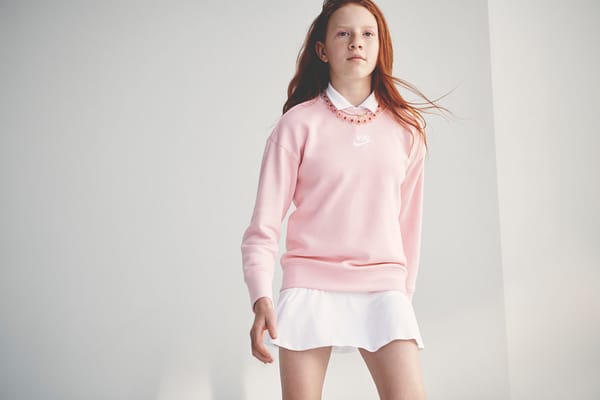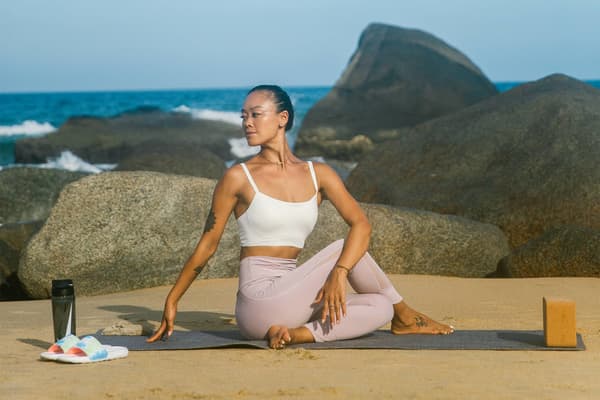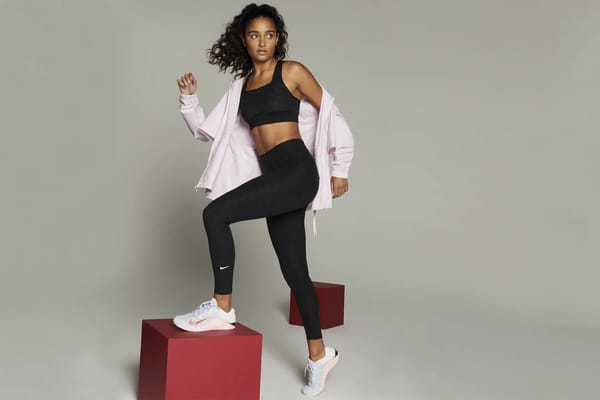What to Wear to Cycle in Any Weather
Buying Guide
When hitting the roads or the trails on your bike, you'll need the right clothing to stay protected from wind, rain and any other weather conditions your ride throws at you. Here's what to wear when biking outdoors.

An outdoor bike ride can double as a great workout and a scenic adventure—and with the right cycling clothing, you'll stay comfortable throughout the journey. Whether you cycle through bike-friendly city streets or mountain bike to take in the views, there are a few cycling essentials that can help you get the most out of your ride. From apparel to safety gear to footwear, here's what to wear cycling.
The Base Layers
If you're heading out in the summer, you'll likely only need the absolute essentials: the base layers for top and bottom. Also, these can serve as the bottom layer once the temperatures drop too. Helpful hint: remember to apply sun cream to any exposed skin (and then some, just in case), no matter what the season.
- Cycling Shorts
Bike shorts tend to be cut longer for extra coverage. Many bike shorts are designed with four-way stretch to allow freedom of movement and have elastic at the leg opening to keep the shorts from riding up as you pedal. Other features to look for include moisture-wicking fabrics and reflective elements to stay visible to drivers and other cyclists.
Mountain biking shorts are often made from two pieces: a stretchy thermo-regulating liner and a durable, loose outer layer with pockets for essentials. - Short-Sleeve Bike Top or Cycling Jersey
While you don't need a short-sleeve jersey specifically designed for cycling, you do need a top that's fitted, stretchy, quick-drying, breathable and moisture-wicking. Nike Dri-FIT clothing disperses moisture over the surface of the fabric so that your sweat can evaporate faster, keeping you cool and dry.
And you'll find plenty of Dri-FIT styles to choose from, including tops with reflective design elements and front zips. Some bike jerseys have additional features, such as back pockets for toting your phone.
The Mid Layers
When it starts to get chilly outside or even if you're heading out in the cooler parts of the day, you may want to add another layer. Here's what you'll need.
- Bike Leggings and Trousers
Like bike shorts, many cycling trousers have a chamois and are made from stretchy moisture-wicking fabric. A pair of bike tights or leggings will be more aerodynamic, while a pair of trousers provides more protection against rough terrain and weather. Some bike trousers are entirely waterproof, and others have panels that provide wind protection. - Long-Sleeve Jersey or Top
Cold weather requires thicker fabric or insulation, but you'll still need something lightweight that stays dry when you sweat. Nike Therma-FIT technology is useful for cooler temperatures, since it traps heat without adding bulk. Look for a half-zip top so you can easily cool down.
The Outer Layer
When the temperature drops below 10 degrees Celsius, make sure your gear keeps you warm. Along with having the right apparel, that means changing out of wet cycling clothing as soon as you finish your ride. The following cycling outfit ideas are ideal for foul-weather riding.
- Cycling Jacket
The right cycling jacket depends on the weather. If heavy rains are in the forecast, opt for a windproof and waterproof jacket that's still breathable, such as one with a GORE-TEX lining.
If it's really cold, opt for a heavyweight jacket with a helmet-compatible hood and synthetic insulation, which adds lightweight warmth. Bear in mind, down jackets can lose their insulating power when wet, so if you choose a down jacket, be sure it has a water-resistant shell. - Cap or Headband and Gloves
Pumping your legs can warm most of your body, but your ears and fingers still might get chilled. A skullcap or headband can help keep your ears warm underneath your helmet.
A pair of full-finger gloves are also essential, and you may want to get a pair of lobster gloves for extremely cold conditions—these keep your fingers paired for extra warmth. You may also want to consider arm warmers or leg warmers. - Shoe Covers
A pair of thick cycling shoe covers will keep your feet toasty, provide grip on the pedals of your bike, and prevent wind and rain from getting in. Many shoe covers also feature reflective design elements.
Biking Essentials for Every Season
- Helmet: you're never too old or too skilled to wear a helmet. Helmets reduce your risk of head or brain injury by up to 88 percent. Depending on your riding style, you might choose a basic recreational helmet, a lightweight road biking helmet or a mountain biking helmet with more protection for the rear of your head. Just make sure it fits securely.
- Sunglasses: if you want to keep dust and debris out of your eyes and protect them from UV rays, you'll need a pair of sunglasses. Choose a wraparound pair for more coverage or a pair of goggles if you wear a mountain biking helmet.
- Bike Socks: in cold weather, sweating can leave your feet freezing, and while in the heat, the moisture can lead to chafing. That's why it's important to get a pair of socks made from synthetic fabrics that are moisture-wicking.
- Cycling Shoes: cycling shoes have a stiffer sole to help you conserve energy, and many have cleats that hold your feet securely to the pedals. Mountain biking shoes are easier to walk in, since they either have recessed cleats or sticky rubber soles for extra traction. Road cycling shoes have protruding cleats and are best for athletes who want to pedal with maximum efficiency. Either type of shoe should fit snugly, with no slippage around the heel.
- Cycling Underwear: cycling underwear is designed to move with you and wick away sweat as you go. Most also feature a chamois, a padded piece that provides comfort, decreases friction and controls moisture. You can wear your cycling underwear or liner shorts under any comfortable pair of cycling shorts or trousers.
- Hydration Gilet or Pack: you'll need to stay hydrated as you go. Storing a water bottle in your backpack or bike attachment is a great option for some. If you want to hydrate without slowing down your ride, opt for a hydration gilet with a water reservoir that allows you to drink hands-free. If you're biking a long distance or need to bring other cycling gear with you, a hydration pack may be better than a gilet.




